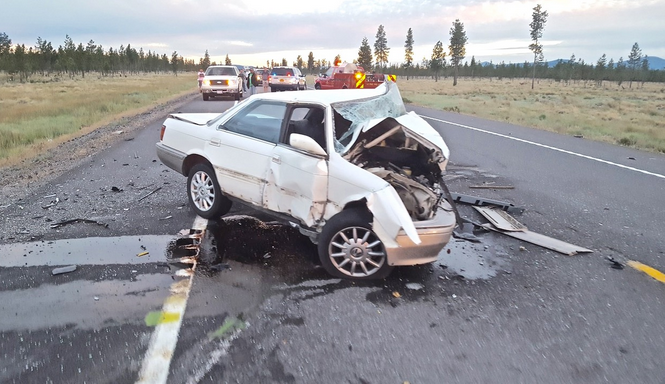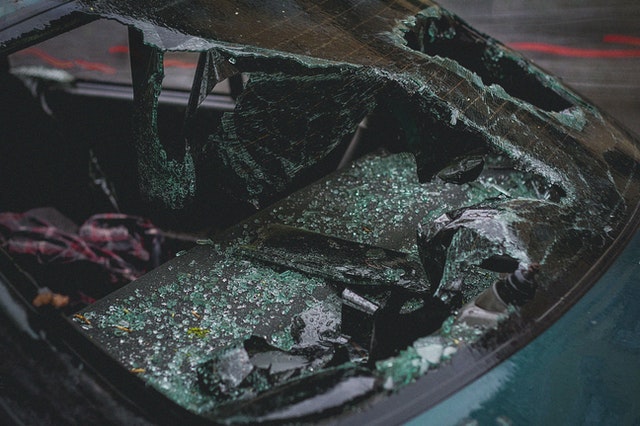The 2022 edition of Dangerous by Design was recently released. Pedestrian fatalities are up over 60% between 2009 and 2021. Florida is the 2nd most dangerous state for pedestrians, with Miami ranking 14th most dangerous metro. Nationwide, crash trends for all modes are going in the wrong direction, despite less traffic on the roads in 2020 and the pedestrianization of many streets during the pandemic. The U.S. is by far the most dangerous developed nation when it comes to roadway safety. We accept too much carnage on our streets and our roadway policies have neglected safety for the sake of driver speed and convenience. Given recent crash trends, America’s traffic safety problem strikes me as an emergency. And emergencies call for bold action.
Despite these trends, I often see complete streets projects, traffic calming and other safety devices being installed in cities across the country. A lot of cities, MPOs and state DOTs are doing their best to turn the tide, but it often seems like an uphill battle and a fight against inertia. For every speed table and roundabout being built, there are ten $5 million dollar road widening projects in the pipeline. An extreme example is the $800 million dollar I-395 project in Downtown Miami, which will expand auto capacity on an urban freeway. Yes, there will be a park underneath the elevated highway, but due to induced demand, the $800 million dollars will eventually lead to more congestion, more crashes, and more emissions.
So, for every step forward, there seems to be two steps back. And piecemeal safety projects can reduce crashes within a small geographic area, but what will it take to turn the tide nationally and at a faster pace? I recently had a long discussion with a recent graduate of a Civil Engineering graduate program while at a dinner party. We discussed a lot of the issues Miami is facing with improving its transit and bike network. The conversation ultimately led to the challenges of designing safer streets when many engineering professionals were taught that the primary goal of street design is to reduce traffic delay. This concurs with my graduate education, where I focused on Transportation Planning and took several Civil Engineering courses. In these courses, the “success” of a transportation network was measured in reduced delay for automobiles, with no value given to reduced crashes or multimodal access. Likewise, none of my Planning courses even touched on the roadway safety problem.
That’s not to say some colleges aren’t addressing the issue. Berkeley has a very good traffic safety course in their Civil Engineering program. Northwestern addresses traffic safety in their curriculum. And lots of other colleges do, too. These courses don’t get at the root of the problem, however, which is the process that most engineers and planners use to forecast traffic and determine how our streets are designed is fundamentally flawed. Not only are travel demand models often inaccurate and over-estimate future traffic, but the primary decision making metric (reduced automobile delay/level-of-service) that often determines which design alternative gets built for thousands of projects every year, is the last measure we should use to rank projects. America’s roadway fatality epidemic is a cumulative result of millions of decisions at the local level which prioritize a few seconds of reduced automobile delay over human lives.
The Four Step Travel Model, just like traffic delay metrics and the 85th percentile rule, were originally designed for highways. Over the past decades, they’ve been applied to surface streets to disastrous outcomes. In my professional experience, I’ve seen traffic models developed in 2010 that overestimated projected daily future volumes for 2020 by tens of thousands of cars. Underutilized and ultimately unneeded traffic lanes were built for these projects due to flawed traffic forecasts, leading to increased vehicle speeds, more severe crashes, and more right-of-way used which could have gone to better uses.
I’ve also seen many Civil Engineers (and, to be fair, Planners) have to un-learn things they were taught in college once they were working on real world transportation projects. Things like restricting left turns, leading pedestrian intervals, road diets, roundabouts, and even protected bike lanes are sometimes met with pushback by some professionals due to the weight their college curriculums gave to reducing automobile traffic delay.
Cities and DOTs can shift transportation policies, NACTO can put out more design guides, the MUTCD will be revised, but the core of any profession is the education its practitioners receive. Changing how we teach engineers and planners can influence the design of our streets in profound ways. And our growing safety problem is, at its core, a function of our street design. With that said, here are a few tenets which should serve as the foundation of Transportation Planning and Civil Engineering curriculums in every accredited program in the U.S.
- Revise how travel demand models and traffic simulations for non-interstate roadways are taught and used in Civil Engineering programs. Models and simulations were a core part of my Civil Engineering classes, but the problems with them have been well documented. While they can be useful tools for interstates and signal analysis, but when used for capacity analysis on surface streets, especially in urban areas, they often influence roadway geometry in ways that maximize driver speeds. Usually, only automobile traffic is modeled, so the outcome of these models obviously prioritizes automobile traffic flow. They can reduce the transportation network (and cities, for that matter) to a one-dimensional collection of pipes which mimic fluid dynamics rather than a complex, contextual system carrying human lives. I’ve also seen projects designed based on models which defy common sense and basic safety measures. They’re only as good as their data inputs, and shouldn’t override professional judgement and safety. More sophisticated tools like STV Vissim can include pedestrian, cyclists and transit uses, and new predictive crash analysis applications can help identify future safety problems. But the traditional method of creating mono-use links and nodes on a screen without regard to multimodal uses and safety has done far more harm than good.
- Revise the use of A through F automobile level of service (LOS) designations in coordination with FHWA and other engineering organizations. “A” has a “good” connotation, but in terms of safety, livability, multimodal access, and even economic development, automobile LOS A (or, free flowing, fast traffic with unneeded lanes/capacity) is the worst outcome for many surface streets. Automobile LOS is a primary metric used to rank project alternatives, so rethinking what constitutes a “good” ranking will go a long way in changing our priorities when comparing design alternatives. The primary role of surface streets are to deliver people in all modes to their destination safely. Their role isn’t to serve as highways so that drivers can arrive at their destination a few minutes early while endangering everyone else on the road. Our project ranking metrics should reflect that.
- Teach traffic delay concepts in relationship to multimodal access, land use and safety. Example: A 6 lane street may have a few seconds less automobile delay compared to a 4 lane alternative, however, what impact do those 2 extra lanes have on total crashes, crash severity, potential bike lanes, neighborhood livability, pedestrian comfort and environmental stewardship? Automobile delay is often taught as an evil which needs to be eliminated at all costs, but in reality, designing around delay reductions is a big reason why U.S. streets have such horrible safety outcomes.
- Traffic safety should be a core part of planning/engineering curriculums nationwide. Courses should include the study of successful European and American cities which reduced crashes, specific safety countermeasures, crash modification factors, benefit/cost ratios, and other safety concepts so graduates can hit the ground running and not have to be re-trained.
- Various other traffic engineering concepts such as the 85th percentile rule, clear zones, traffic signal timing, and the role of arterial/collector streets in urban areas should be revised in curriculums to reflect recent research and best practices. NACTO guides should be used to supplement these efforts.
- Reconsider how we think about slower speed, non-injury crashes in Civil Engineering programs. For instance, many of our surface streets were designed excessively wide to maximize space between cars for fear of them colliding. By constantly widening our streets, however, we’ve created a situation where crashes are more severe and more prone to injury or death due to higher speeds, especially for pedestrians and cyclists. Narrower streets and tighter turn radii may put cars closer to each other and to the curb, but if crashes occur, they’re less likely to cause injury since traffic speeds are much slower. Slow speed, property-damage only crashes are acceptable and vastly preferable to higher speed crashes which lead to injuries or deaths.
- Finally, teach induced demand as a core principle of roadway capacity. “Fighting congestion” with a never-ending series of highways and surface road capacity expansions has proven not to work in the past. It’s dangerous, financially and environmentally unsustainable, and does nothing to actually reduce traffic or improve safety. The reality of induced demand flips the equation and makes the cost/benefit ratio of surface road widenings negative. This concept needs to be emphasized in every curriculum.
Of all the problems America faces, our dangerous roads are the most solvable. The solutions are known. They’ve been tried and tested successfully throughout the world. But we will have to rethink how we teach our profession so that change becomes permanent, ubiquitous, and not prone to in-fighting that so often happens when trying to implement safe streets.




